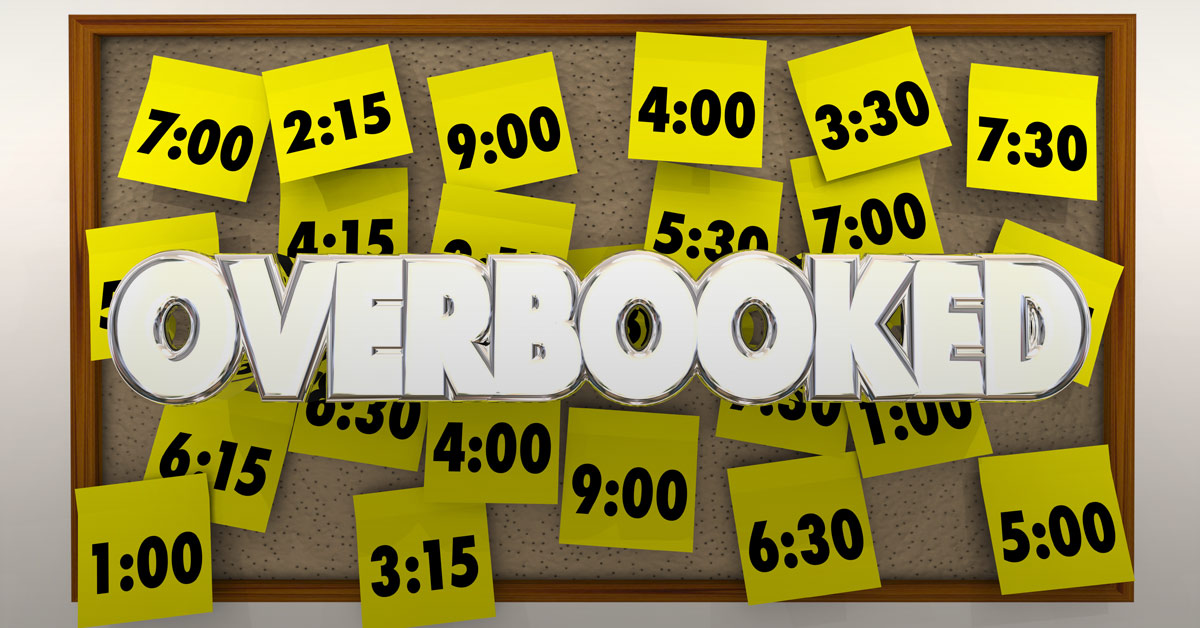
Jun 10 Too Many Meetings? How to Carve Time to be a Strategic Leader
As a corporate leader, you’re facing challenges right now that require strategic solutions. Between concerns over losing or attracting top talent, keeping a constant eye on your market share, and managing in new and ambiguous environments, senior executives are hard-pressed to carve out strategic thinking time for themselves and their teams.
Could the solution be another meeting? You put it on the calendar because you think the more you meet about the challenge, the greater your chance of coming up with that next innovative solution. Unfortunately, too many organizations don’t realize they are slowing down the ability of their people to have time for big picture strategic thinking time with too many meetings! Then they wonder why they aren’t moving ahead to achieve their organizational goals.
Here are two facts that I’ve come to realize in working with brilliant senior executives over the years:
Fact #1) Your meetings and projects will follow Parkinson’s law. This law states that work expands to fill the time. When you assign longer meeting times or extended project deadlines, your team will fill up that exact time. Yet, when you cut your meeting time in half, it’s incredible how much more succinct everyone will be. And when you tighten up the project deadline, watch how productive you and your team can be in getting it done in half the allotted time.
Fact #2) You alone control your time. We can’t control many things, but one of them is how you decide to utilize your time, especially as a senior executive. You get to determine if you need to be in that meeting or whether you need to take a break and attend your kid’s soccer game. Too often, leaders allow their calendar to control their day versus taking control of their calendar. And yes, sometimes that means pushing back and saying, “My priorities have shifted, and I won’t be attending those meetings anymore; however, Lisa on my team will represent our division and let me know if I need to be updated on something.”
Here is a strategic exercise that I’ve shared with my senior executive clients to help them find more time in their calendar to pause, reflect, and think about their strategic vision. In no time, they find more innovative solutions than ever before.
1) Assess Your Priorities
What are the big three priorities that you need to implement to add value to the organization in your role? If you have more than three-four priorities at any given moment, then nothing is a priority. You need to get clarity on the three main drivers in your role. Your priorities may need to shift and change, but keep your eyes on the three rings on the target that you’re trying to achieve.
2) Review Your Work Week
Now, look at an average workweek. Write down what you are doing during bigger chunks of time. This is always an interesting exercise when I ask my coaching clients to share their calendars with me. They’re amazed how I can find all kinds of time. With one of my SVP clients, when we were discussing the big-time chunks, it was eye-opening. Within a week, the leader found eight hours a week in the calendar to work on critical projects driving sales and profitability.
3). Compare Where You Are Spending Time Vs. Top Three Priorities
Compare the big chunks of time to your priorities to determine what you spend your time on. It would help if you were paying close to 80% of your time as a senior executive on your big three priorities.
4) What Needs to Be Removed or Delegated?
Now review the things that can be delegated to one of the people on your team. Make sure you both utilize this responsibility as a developmental step they can take, not just a task you no longer want to do. For example, which meetings do you no longer need to attend? Where is your attendance no longer required to provide value? Many organizations have their people in so many useless meetings that it makes my head spin. 83% of people are spending a third of their workweek in meetings, a trend I believe we need to reverse.
5) Stay True to Your North Star
After you go through this exercise, commit to staying focused on your north star of the top three priorities you identified, and you’ll achieve your goals for the organization at warp speed. You’ll feel that you’ve accomplished more and know that you’re delivering more excellent value and contributing to your organization’s key initiatives.
It’s easy to stay busy; what’s hard is carving out time to be a strategic leader. I encourage you to work through this exercise. It will keep you focused on the right priorities to be genuinely productive as you work to attain the best outcomes. As we were closing our coaching engagement, one of my senior executive clients whom I’ve worked with over the last year shared this, “The single best advice you gave me was how could I be truly productive when my calendar was jam-packed all day long. Your techniques helped me find time to be strategic and think of new opportunities and innovate faster, but you’ve got to carve out that time for yourself.”
Accelerator Questions
- How can you use Parkinson’s law to cut your meeting times and project deadlines in half?
- Are you already clear regarding your three main priorities, or do you need help getting clarity on where your focus should be?
- Does delegating responsibility to others to free up time for strategic thinking energize or frighten you?






No Comments